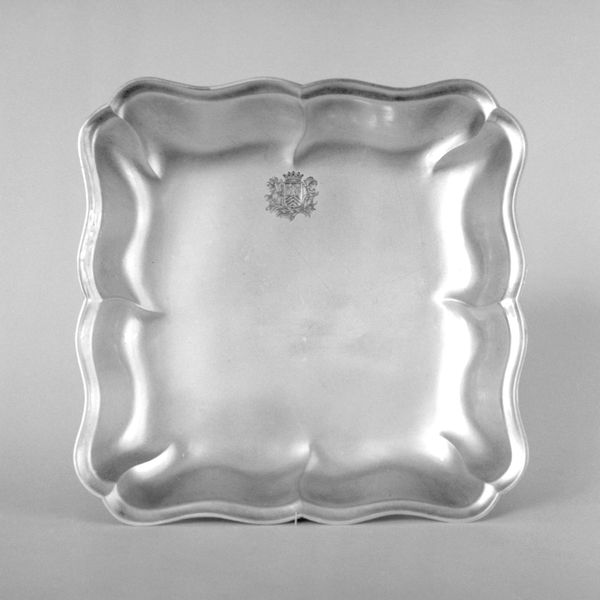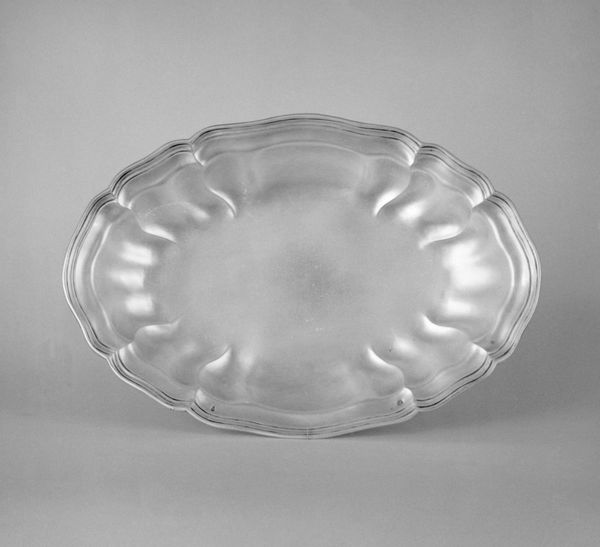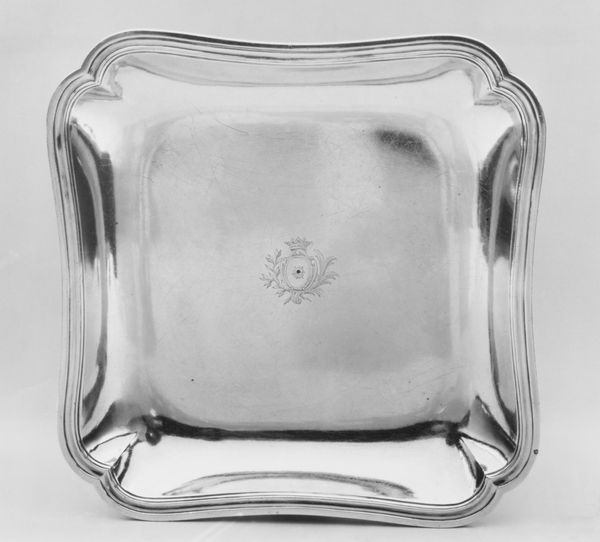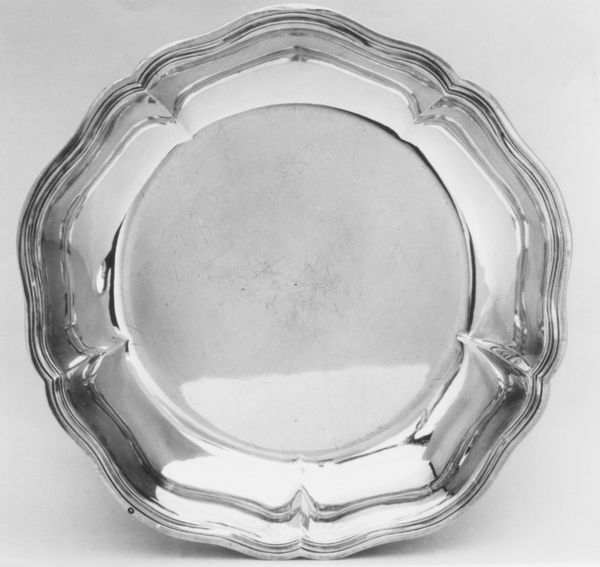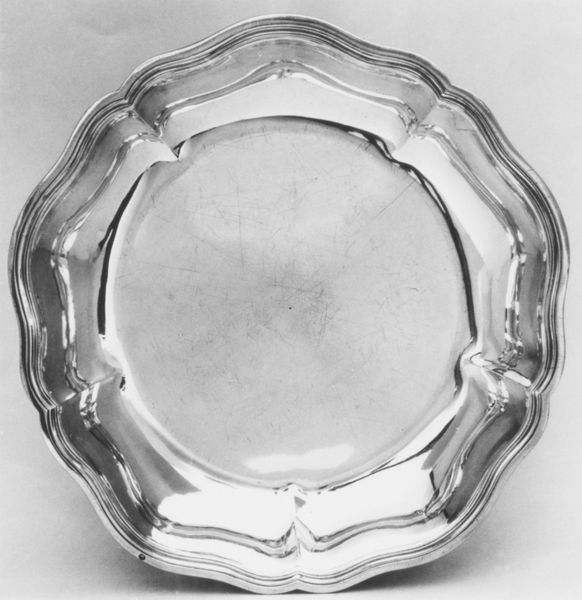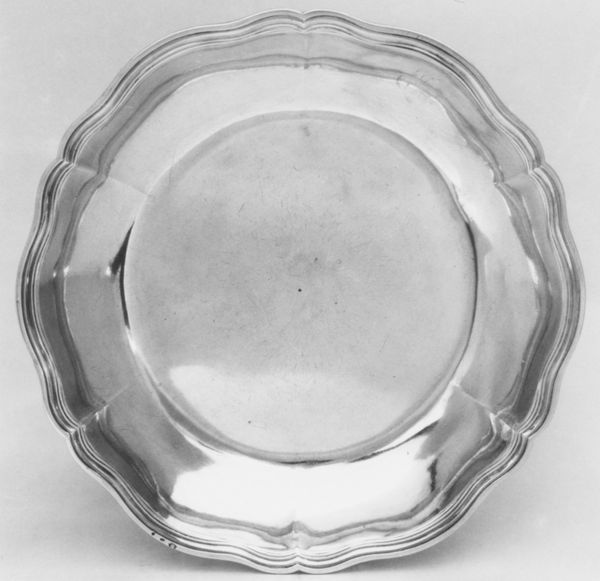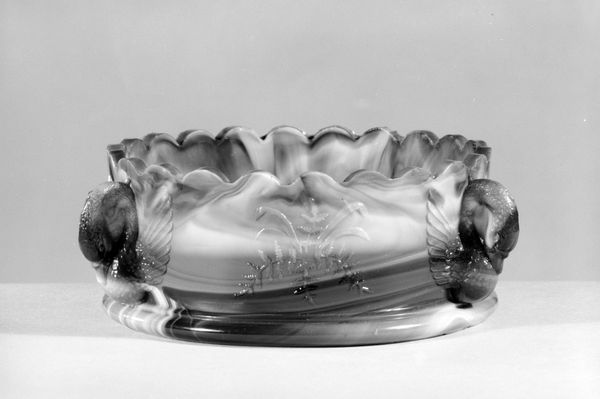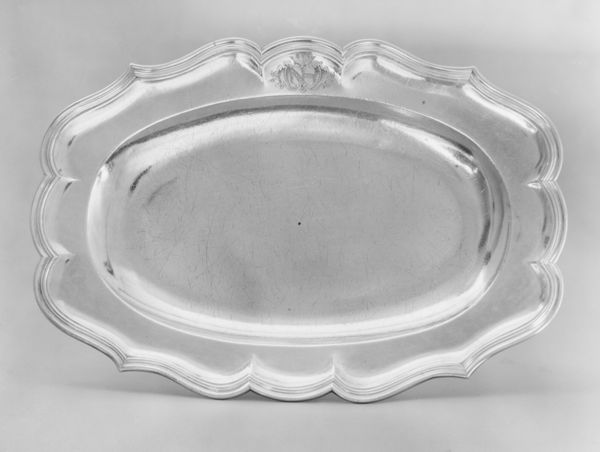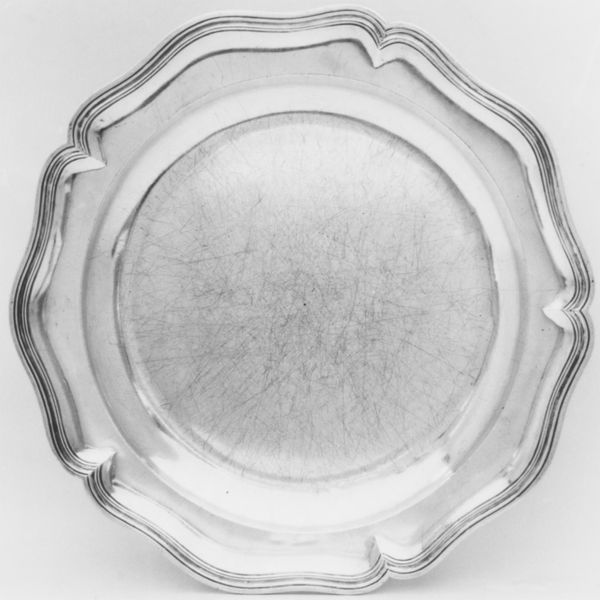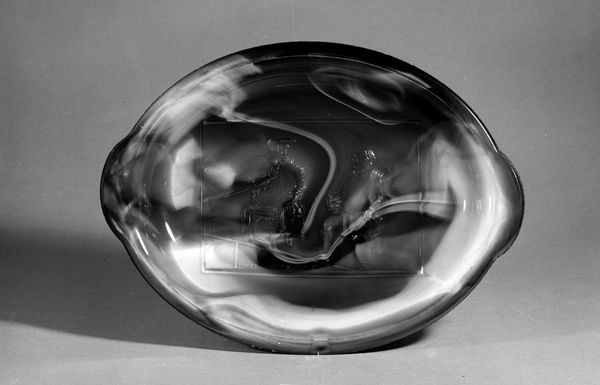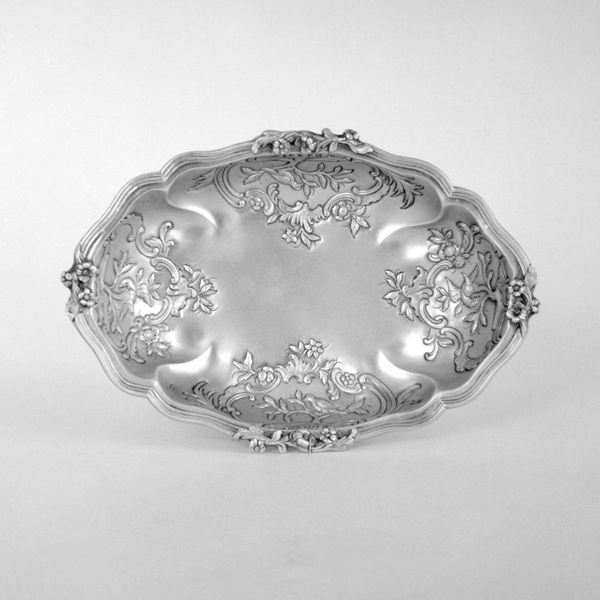
silver, metal, sculpture
#
silver
#
metal
#
sculpture
#
decorative-art
#
rococo
Dimensions: Width: 12 in. (30.5 cm)
Copyright: Public Domain
Editor: This "Triangular Dish," crafted from silver sometime between 1763 and 1765 by Adolf Carl Holm, is quite striking! The unusual shape coupled with the gleaming metal gives it a somewhat surreal feel, like something out of a dream. How do you interpret the design and symbolism of such a piece? Curator: It is interesting how the shape, so unusual for tableware, clashes against the highly polished, refined silver, and indeed suggests that subconscious space where such discordant combinations make perfect sense. It carries Rococo symbolism. Notice the repeating shell motifs around the edges, an allusion to Venus and watery abundance. But Holm twists this familiar visual language. The triangular form defies the softness typically associated with the Rococo style. What emotion does the stark geometry evoke for you? Editor: It makes me think of a controlled energy, almost like a restrained wildness. Is that tension intentional, do you think? Curator: Undoubtedly. Silversmiths in this era weren't merely crafting functional objects, they were constructing statements. They layered meaning through form and motif, imbuing pieces like this dish with a visual rhetoric, understood by those familiar with the language of symbolism and social expectation. Even its triangular form held significance as all seeing eye that knows where it sits on a table and also on social stage. Does knowing all of this add anything for you? Editor: Absolutely! It goes from being a beautiful object to a commentary on society, tradition, and artistry all at once. Curator: Precisely. The persistence of archetypes is incredible. Even a humble dish speaks volumes when you listen.
Comments
No comments
Be the first to comment and join the conversation on the ultimate creative platform.
